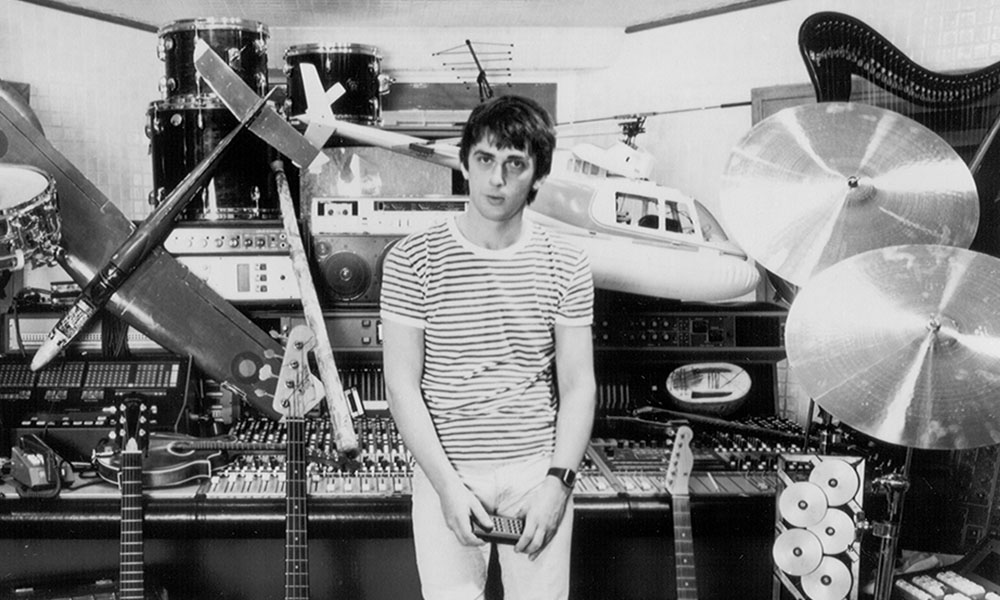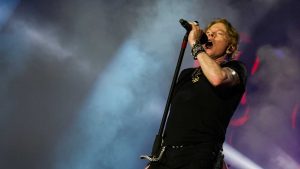With one-man bands, it’s probably best to erase the image of chimney-sweeper Dick Van Dyke prancing about in the movie Mary Poppins. Instead, think of talented multi-instrumentalists such as Stevie Wonder, not only one of the best one-man bands to sit behind a kit, keyboard, and harmonica, but one of the coolest, most talented people in music.
Thousands of top-class musicians are able to play a host of instruments – among them Curtis Mayfield, PJ Harvey, Dave Grohl, Radiohead’s Jonny Greenwood, Geddy Lee of Rush, Alicia Keys, Roy Wood, Brian Jones of The Rolling Stones, Jack White, Beck, Trent Reznor of Nine Inch Nails, and Bruno Mars, to name just a dozen – but with so many great session musicians around, it takes a certain type of boldness to play all the instruments on your own record.
Here are 10 of the best one-man bands in history.
Sidney Bechet
When engineer John Reid told Sidney Bechet about the possibilities of multi-tracking, the jazz maestro devised a plan to work out the individual parts on six different instruments and memorize the timing and melody of each. Bechet’s daring venture came in the days before tape recording, so each effort had to be recorded on a 78rpm wax original and superimposed on to the rest. On April 19, 1941, Bechet played six instruments – soprano saxophone, tenor saxophone, clarinet, piano, string bass, and drums – for a recording of “The Sheik Of Araby.” He also recorded four parts for “Blues For Bechet.” Bechet later said he was in a “cold sweat” about the project, recalling, “Thinking about this session was giving me nightmares. I dreamt I was playing parts for the whole Duke Ellington band.”
Hear: “The Sheik Of Araby” (1941)
Paul McCartney
From one of the world’s best bands to one of the best one-man bands in the world: just before Christmas 1969, Paul McCartney, working during The Beatles’ split, began working on McCartney, his own solo album, at his home in London’s St John’s Wood. He said that he decided to sing and play all the instruments – acoustic and electric guitars, bass, drums, piano, organ, percussion, Mellotron and toy xylophone – because “I think I’m pretty good.”
McCartney later admitted to enjoying working as a solo artist, saying, “I only had me to ask for a decision, and I generally agreed with myself!” After its release, the album reached No.1 on the Billboard charts in America and No.2 in the UK. McCartney’s experimental album also inspired Emitt Rhodes, of the band Merry-Go-Round, who played every single instrument and sang all of the vocal parts on three baroque pop albums released in the early 70s.
Hear: “Maybe I’m Amazed” (1970)
Todd Rundgren
On his third solo album, 1972’s Something/Anything, Todd Rundgren wrote, arranged, sang, and played everything from the piano to guitars on an array of songs. He was just 23. The former producer and engineer said that, despite not being able to read or write music, he had a remarkable memory for playing parts by ear.
He would begin with a drum track and then overdub other instruments on top, often creating melodies on the spot. The album yielded some of Rundgren’s finest songs, including “I Saw The Light,” “It Wouldn’t Have Made Any Difference,” and “Couldn’t I Just Tell You.” A photograph inside the album cover showed Rundgren alone in a room packed with equipment, guitar strapped to his shoulder, arms flung wide, and hands flashing victory signs. He was right to be confident in his abilities as one of the world’s best one-man bands: the album stayed in the charts for 48 weeks and ended up going gold.
Hear: “I Saw The Light” (1972)
John Fogerty
After leaving the hugely successful Creedence Clearwater Revival, singer and guitarist John Fogerty opted for complete control over his debut solo album, The Blue Ridge Rangers, a series of cover versions of his favorite songs. His bass and snare drumming on a version of Hank Williams’ “Jambalaya (On The Bayou)” worked a treat, and his usual vibrant guitar was supplemented by steel-guitar playing, banjo licks and some strong fiddle playing.
Hear: “Jambalaya (On The Bayou)” (1973)
Mike Oldfield
Just one month after John Fogerty’s solo effort came the prog epic Tubular Bells, from England’s Mike Oldfield. On the album, Oldfield played a remarkable array of instruments, including acoustic guitar, bass guitar, electric guitar; Farfisa, Hammond, and Lowrey organs; flageolet, fuzz guitars, glockenspiel, mandolin, piano, percussion, timpani, and, of course, tubular bells.
The album was recorded at The Manor in Oxford, and its success and iconic status was confirmed when music from “Tubular Bells” was used in the hit horror film The Exorcist.
Hear: “Mike Oldfield’s Single (Theme From Tubular Bells)” (1973)
Prince
In September 1977, at the pioneering Sound 80 recording studio in Minneapolis, Minnesota, Prince began working on his debut album, For You. It was an album which bore the soon-to-be iconic credit “Produced, arranged, composed, and performed by Prince.” Like the best one-man bands, the late Prince, then just 17, was almost obsessive about getting the sound he wanted. When he was asked by Dick Clark about how many instruments he played on the album, Prince responded with “thousands.” He actually played 27 instruments on For You (29 if you include hand claps and finger snaps).
Hear: “Soft And Wet” (1978)
Steve Winwood
Steve Winwood was ranked by Rolling Stone as No.33 in its 100 Greatest Singers Of All Time list, but the man who was part of seminal bands such as Spencer Davis Group, Traffic, and Blind Faith was also an excellent multi-instrumentalist. With his first solo album, he took complete creative control, and on Arc Of A Diver, released by Island Records, in December 1980, he took charge of everything at a studio he had built on his own farm in Gloucestershire.
Winwood played acoustic and electric guitars, mandolin, bass, drums, percussion, drum machines, pianos, synthesizers, and organ, as well as singing lead and backing vocals. Just for good measure, he produced, engineered, and mixed all seven tracks. Both the album and its lead single, “While You See A Chance,” were Top 10 hits.
Hear: “While You See A Chance” (1980)
Phil Collins
Phil Collins admits he was going through a troubled time when he recorded Both Sides at his 12-track home recording studio. It was in the wake of his second divorce, when he even took refuge in playing the bagpipes (he took lessons from a Scottish piper). Both Sides, released by Virgin, in 1993, started as home demos which Collins then decided to turn into a full album release after working on it entirely by himself.
Collins earns his place among the best one-man bands for playing all the instruments on the album as well as taking on the main production duties. He even wrote the sleevenotes. The former Genesis star said, “Both Sides is my favorite album, from a songwriting and creative perspective. It was very much a solo album. I played everything, the songs just streamed out of me, and as a writer that’s the kind of thing that you dream of.”
Hear: “Can’t Turn Back The Years” (1993)
Sufjan Stevens
When he was a schoolboy in Detroit, Sufjan Stevens took music lessons in the oboe and English horn. He would play both on his 2003 concept album, Michigan. It also features the singer-songwriter – who has an Oscar song nomination to his credit – on piano, electric organ, electric piano, banjo, acoustic and electric guitar, bass guitar, vibraphone, xylophone, glockenspiel, recorders, wood flute and whistles, drum kit, percussion, shakers, sleigh bells, tambourine, and cymbal.
However, Stevens, like the best one-man bands featured here, has some way to go to beat the record set by the late Roy Castle. The television star and trumpeter played the same tune on 43 different musical instruments, including the world’s smallest violin, in just four minutes.
Hear: “For The Windows In Paradise, For The Fatherless In Ypsilanti” (2003)
Dave Edmunds
Dave Edmunds rose to fame in the 70s – especially after his wonderful hit “I Hear You Knocking” – and made a few albums where he took creative control and played all the instruments. He returned to that format in 2013 with the album … Again, though this time it was a 21st-century digital production. Edmunds said, “I’ve been making records on my own since the mid-60s, when I started in a tiny, ill-equipped studio in a barn… I did … Again on my laptop in my spare bedroom. I got myself a MacBook Air, it came with something called GarageBand, and I did one track on there and then I bought its big brother, 130 quid or so, pressed a button and within 30 seconds I had the studio in front of me, an infinite amount of tracks and effects.”
Hear: “Standing At The Crossroads” (2003)
Discover more about how musicians embraced DIY ethics and created music on their own terms.



